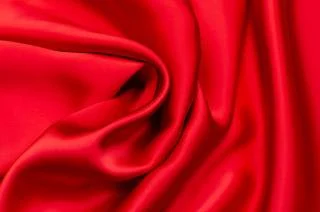Regenerated fiber
The
cellulose component of wood pulp is chemically dissolved and regenerated into
fiber to form regenerated fibers. These fibers contain cellulose as a
fiber-forming material and thus bear a resemblance to other cellulose fibers
such as cotton, linen, and sisal. Due
to its high luster and smoothness, regenerated viscose rayon is accepted as an
alternative to silk fiber in the garment sector. These fibers have high melting
and degradation temperatures and can be used safely at high temperatures.
Traditional viscose rayon has a tenacity of less than 20 cN / Tex, which needs
to be improved through adequate research and development. Regenerated viscose
rayon Tenasco, developed for making tire cords, has a 40 cN / Tex high
tenacity. The tenacity of this regenerated fiber was further improved to 60 cN
/ Tex. The high-modulus regenerated fiber was made under the trade name
Fortisan. Acetate Rayon's planned stretching tensions increased to 60 cN / Tex
and modulus increased to 1600 cN / Tex.
Why regenerated fiber?
With the explosion of the world's population, the demand for textile materials has increased, as clothing is one of the basic needs of human beings. Thus, in addition to natural fibers (wool, silk, and cotton) with limited resources, and since synthetic fibers (nylon, dacron, and acrylic fibers) harm the environment during their processing, fibers regenerated from cellulose have emerged as an abundant resource in modern times. Based on the fiber requirements, the regenerated fibers are made by different methods to achieve the desired properties and on this basis, they are classified into different classes. Modern production methods and their evolution are dedicated to reducing problems with sustainability in all aspects. Extensive research has been done to achieve the maximum output of regenerated fibers without disturbing the environment and ecosystem.
Regenerated fiber properties
i.
Regenerated fibers such as acetate and triacetate are known or classified as
cheaper alternatives to silk due to their bright and elegant drape appearance.
ii.
They are also made, so they are completely recyclable and biodegradable.
iii.
They have a minimum amount of fabric shrinkage.
iv.
It has a high absorption capacity for suitable quality dyes, making it extremely
popular among blended regenerated fibers.
v.
Regenerated fiber is safe for wash
vi.
These regenerated fabrics use low-strength and closed-loop processes where all
the waste material generated during production is reused in the manufacturing
process.
vii.
Just like many other synthetic fibers have many textures, regenerated yarn can
also be filament and become a staple item.
viii.
It is very soft to the touch and so comfortable.
ix.
It is also eco-friendly and renewability
x.
It has no static or pilling problems.
xi.
In hot weather, it lowers the body temperature up to 3-4 %.
xii.
It is resistant to alkalis but sensible to acids.
xiii.
It has good color stability.
xiv.
Its cross-section is that of a kidney-like bean shape.
xv. It is a weaker fiber than cotton.
Advantages of regenerated fibers
i.
Regenerated fibers are made of cellulose from sawdust residue recovered after
wood processing.
ii.
Regenerated fibers are infinitely recyclable, following the logic of circular
sustainability.
iii.
These fibers are moisture-wicking, keeping the wearer cool in the summer and
warm in the winter.
Disadvantages of regenerated fibers
i.
Regenerated fiber is weak in tension and easy to wrinkle.
ii.
Its strength decreases when wet.
iii.
Production cost is high.











0 Comments